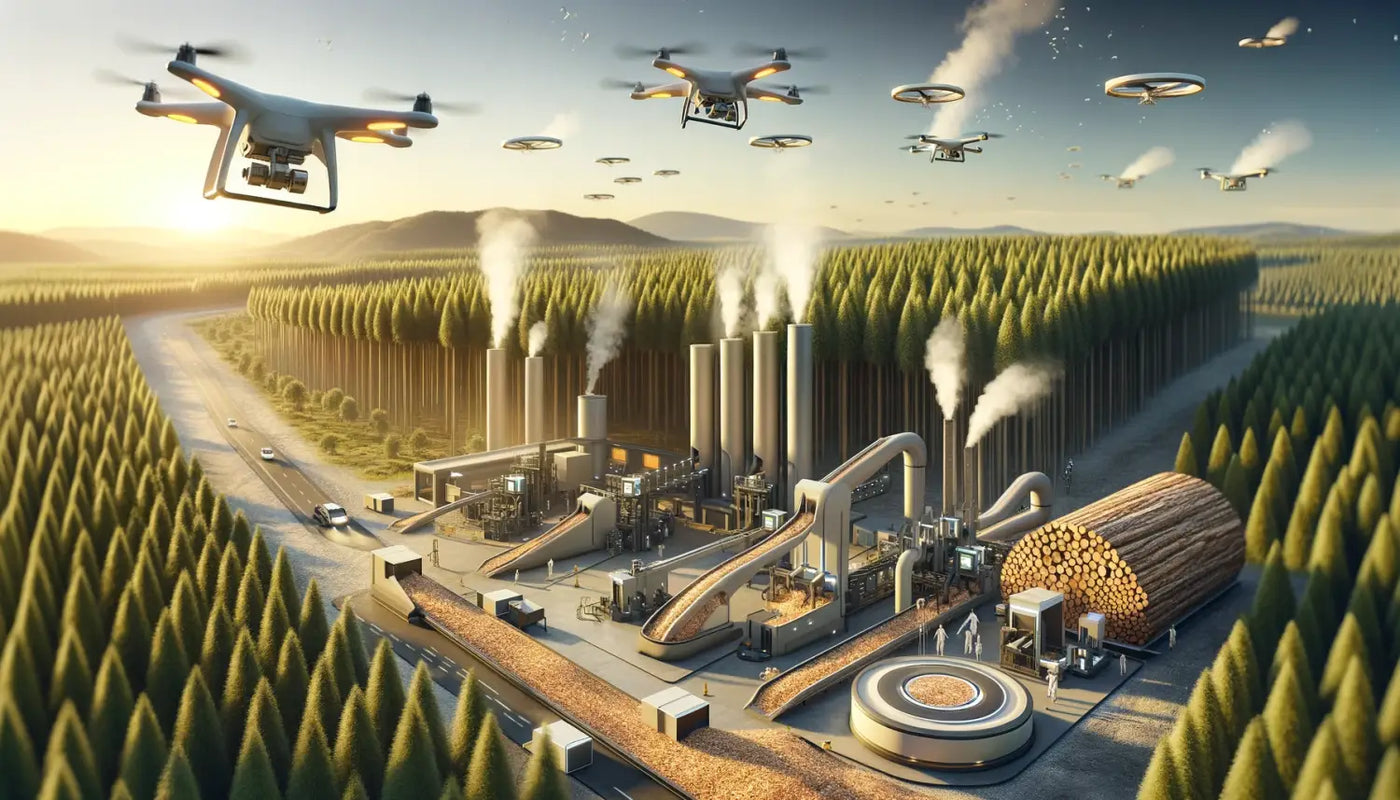Wood fuels have long held a significant place in the energy industry, and in recent years, their importance has only grown. As the world increasingly demands renewable and sustainable energy sources, wood fuels are stepping up to meet that need. Why, you ask? Well, we're here to explore the future of wood fuels, delving into the innovations and trends shaping this integral industry. Buckle up – it's going to be an enlightening journey!
The Benefits of Wood Fuels
Before we delve into the exciting future, let's take a moment to appreciate the current benefits of wood fuels. Firstly, they come with significant environmental advantages, such as reduced greenhouse gas emissions. In fact, burning wood releases only as much carbon dioxide as it absorbed during its growth, creating a balance in the carbon cycle.
Moreover, wood fuels are a renewable and sustainable energy source. They’re derived from our sustainable wood resources, ensuring that forests and ecosystems are protected and replenished.
Lastly, wood fuels contribute to energy independence and security. Instead of relying on volatile international fossil fuel markets, countries can produce their own energy using domestic wood resources.
Current State of the Wood Fuels Industry
Currently, wood fuels are used in a variety of sectors, from residential to commercial and industrial. Whether it's kiln dried wood for residential heating, or restaurant-grade charcoal for commercial cooking, wood fuels have a wide array of applications.
However, the industry does face certain challenges. Supply chain management and technological limitations can hinder the efficient production and distribution of wood fuels. Plus, government policies and regulations can impact the industry both positively and negatively.
Innovations in Wood Fuel Production
Advanced Wood Pellet Manufacturing Technologies
One area of significant innovation in the wood fuels industry is the production of wood pellets. Advanced manufacturing technologies, such as improved pelletization methods, are resulting in higher energy density and lower production costs. With the potential for automation, these advancements could lead to even greater efficiency and affordability in wood pellet production.
Torrefaction and Pyrolysis
Imagine if we could increase the energy content of wood fuels while reducing emissions. Well, that's exactly what the processes of torrefaction and pyrolysis aim to achieve. However, while these technologies hold great promise, scaling up to commercial production presents its own set of challenges. Keep an eye on this space!
Wood Gasification
Wood gasification is another exciting innovation in the field. This process, which involves converting wood into a combustible gas, can be used to generate heat and power with high energy efficiency and low emissions. The potential for integrating wood gasification with other renewable energy technologies is just the cherry on top!
Hydrothermal Carbonization (HTC)
Last but not least, we have hydrothermal carbonization, a process that uses water and heat to transform biomass into a high-energy solid fuel. With potential benefits like increased energy content and improved fuel properties, HTC could be a game-changer for the wood fuels industry.
Emerging Trends in Wood Fuel Utilization
Combined Heat and Power (CHP) Systems
The use of wood fuels isn't just limited to traditional heating and cooking. Emerging technologies like Combined Heat and Power (CHP) systems are showing us new ways to utilize wood fuels. By generating both heat and electricity from the same energy source, CHP systems offer increased energy efficiency and reduced emissions.
District Heating Systems
Another emerging trend is the use of district heating systems, which distribute heat generated in a centralized location to multiple buildings. This system can utilize wood fuels efficiently, reduce energy losses, and improve energy distribution. In the future, we may see district heating systems integrated with other renewable energy sources for an even greener energy solution.
Co-firing with Fossil Fuels
Co-firing, the process of burning wood fuels alongside fossil fuels in power plants, is another trend to watch. This approach can reduce emissions and increase fuel flexibility, making it a valuable tool in the transition to a low-carbon energy system.
Wood Pellet Grills and Stoves
On a lighter note, wood pellet grills and stoves are gaining popularity for residential cooking and heating. Combining convenience with eco-friendliness, these devices are a testament to how innovation is reshaping the way we use wood fuels. From Swedish fire logs to firelighters and kindling, the future of home heating and cooking is here!
The Future of Wood Fuels
Looking ahead, the future of wood fuels appears bright. With the potential for growth and expansion in the industry, coupled with ongoing research and development, the next generation of wood fuels is on the horizon. And let's not forget the crucial role of government support and policies in promoting the use of renewable energy sources like wood fuels.
Conclusion
From reducing greenhouse gas emissions to contributing to energy security, the benefits of wood fuels are clear. As we've seen, the current challenges faced by the industry are being met with innovative solutions, from advanced manufacturing technologies to new methods of fuel utilization. With such promising developments underway, it's fair to say that wood fuels have a bright future ahead.
So, the next time you throw a hardwood ash log on the fire, remember – you're not just burning wood, you're part of the renewable energy revolution! Who knew being eco-friendly could be so warm and cosy?

